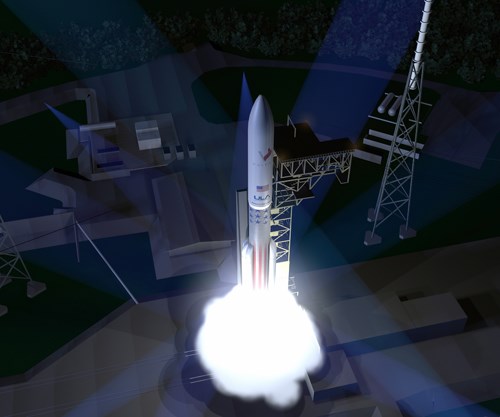United Launch Alliance rocket ushers sigh of relief
With nerves frayed over the uncertainty regarding the supply of Russian-made rockets, ULA joins SpaceX with the development of a new heavy-lift rocket to help preserve American space security.

ULA's Vulcan rocket, announced this week at the 31st Space Symposium, gives the US space program another option for putting people and equipment into space.
If you haven't been paying close attention to the space launch industry of late, you probably didn't know that it had been made quite complicated by Vladimir Putin. Indeed, the Russian leader's foreign policy antics in Ukraine, combined with some of his anti-United State rhetoric, has strained Russian-US relations, raising the spectre of the Cold War political struggles — even if only symbolically for now.
What's this have to do with space launches? For many years the United States has relied on Russia to supply its RD-180 rocket to power satellites and other craft into Earth orbit and beyond on the Atlas V launch vehicle. The R-180 is supplied by NPO Energomash (Khimki, Russia); the Atlas V is manufactured by United Launch Alliance (ULA, Denver, CO, US). However, as relations with Russia soured, this sole-source supply situaiton became, to put it mildly, unsustainable. It's been feared that if Russia were of the mind to do so, it could cease supply of the RD-180, leaving the US with no immediate alternative on hand. This has spurred the US government to call for US-made alternatives to the RD-180.
So, it was a big deal this week when ULA announced at the 31st Space Symposium in Colorado Springs, CO, that it is developing a new rocket, called Vulcan, designed to make "launch services more affordable and accessible," according to a ULA statement. ULA, the statement also notes, is responsible for more than 70% of the nation's space launches, so a new rocket source is critically important. In addition, ULA introduced with Vulcan the Sensible, Modular, Autonomous Return Technology (SMART) initiative, which will allow ULA to re-use the most expensive portion of the first stage — the booster main engines — via mid-air capture.
Neither is ULA alone in its rocket development. SpaceX (Hawthorne, CA, US) is working on a heavy-lift rocket, the Falcon Heavy, which will launch for the first time later this year. It has a payload of 117,000 lb, which makes it among the largest rockets ever made.
The upshot is that the US, finally, seems to have some rocket independence, which gives the American space program some much-needed space-access security.
Related Content
-
Infinite Composites: Type V tanks for space, hydrogen, automotive and more
After a decade of proving its linerless, weight-saving composite tanks with NASA and more than 30 aerospace companies, this CryoSphere pioneer is scaling for growth in commercial space and sustainable transportation on Earth.
-
Plant tour: Aernnova Composites, Toledo and Illescas, Spain
RTM and ATL/AFP high-rate production sites feature this composites and engineering leader’s continued push for excellence and innovation for future airframes.
-
Plant tour: Airbus, Illescas, Spain
Airbus’ Illescas facility, featuring highly automated composites processes for the A350 lower wing cover and one-piece Section 19 fuselage barrels, works toward production ramp-ups and next-generation aircraft.






